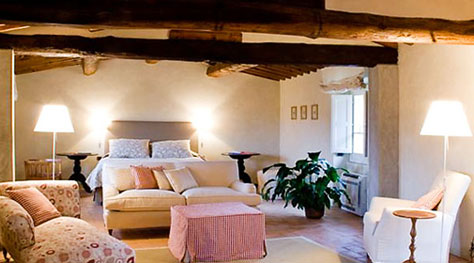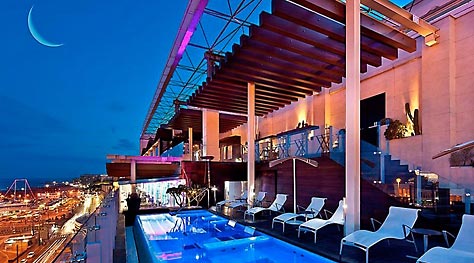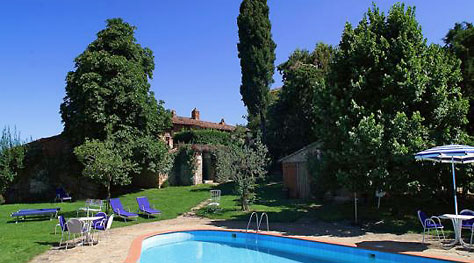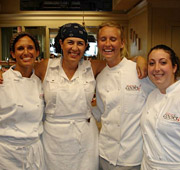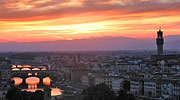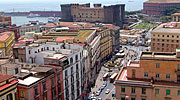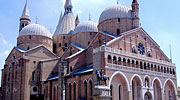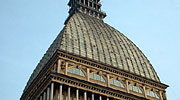Caffè Italia
An itinerary tracing three hundred years of history, surrounded by the irresistible aroma of Italian coffee.
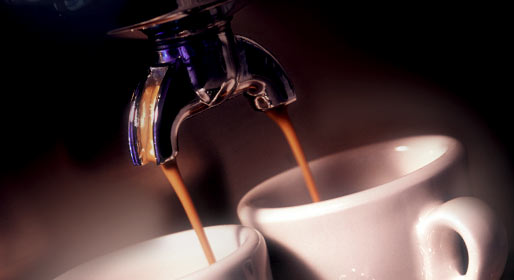
The Italians and their coffee. An undying love affair which began back in 1615, the year in which coffee, imported from the East by the merchants of Venice, was first introduced to Europe. Venice was, in fact, the first Italian city to experience the taste of coffee and, soon became the undisputed realm of the Botteghe del Caffè. Founded in 1720 and considered to be the oldest coffee house in Europe, Venice's legendary Caffè Florian (www.caffeflorian.com), in St Mark's Square, was frequented by clients such as Goldoni and Casanova. Also located in the famous square are the Caffè Lavena (www.lavena.it), the haunt of renowned musicians, including Wagner and Liszt, and the Gran Caffè Quadri (www.alajmo.it/en/sezione/grancaffe-quadri/grancaffe-quadri), which was much loved by Lord Byron. From Venice, the fashion of drinking "boiling black water" spread to all the principal cities of Italy. Here, any number of "caffetterie" were opened to cater for an ever growing clientele comprised of high-flying politicians, writers, and philosophers, but also for ordinary business men.
Turin has a large number of these historic cafes; establishments which today still retain the atmosphere of centuries past, and of the times when they functioned as vibrant theatres of the city's political life. This is true of Al Bicerin (www.bicerin.it): with its interiors characterized by immense mirrors and lush velvet upholstery, it is as resplendent now as in the time when it was patronized by Cavour. The décor of the Caffetteria Baratti & Milano (www.barattiemilano.it) is equally impressive, featuring the finest marble, and luxurious wood paneling; reminders of former famous patrons, who included the members of Royal Family of the House of Savoy. Caffè San Carlo, hastily closed in 1837 due to its association with subversive activists, was the first Italian establishment to use gas light.
Like Turin, Trieste too has a long standing relationship with coffee and is home to both some of Italy's finest historic cafes and the world famous Illy coffee company. Illy has funded numerous initiatives promoting the culture of coffee, including the creation of a University of Coffee open to both professionals and coffee aficionados (www.unicaffe.it). When paying a visit to properties of distinctly Mittel-European charm, such as the Caffè degli Specchi (www.caffespecchi.it), the Caffè Tommaseo (www.caffetommaseo.com), and the Caffè San Marco, it is easy to see why having a coffee amongst friends in Trieste has become such an institution, enthusiastically upheld by both the young and old. Each year, during the festive season, the Vie del Caffè is organized: an event which comprises concerts and theatrical shows performed in the city's principal cafes.
Padua is another Italian city famous for its coffee culture, the maximum expression of which is the legendary Caffè Pedrocchi (www.caffepedrocchi.it); the cafe which Stendhal declared "the best in Italy". Today Caffè Pedrocchi has not only renewed its original vocation as important cultural meeting place but has also become one of the finest restaurants in the whole of the Veneto region.
In the 19th century, the cafes of Milan became stages for intense cultural and political debate. A number of important pages of Italian history were written by the men who habitually met in the Caffè Zucca (www.caffemiani.it): an elegant art nouveau style cafe beneath the arches of the Galleria Vittorio Emanuele. Puccini, Verdi and Toscanini were all regular clients and the cafe was depicted by Boccioni in his famous Brawl in the Galleria. Another Milan institution is the Cova, in via Montenapoleone, one of the city's most exclusive lounge bars which, in the past, was a meeting place for Italian patriots. Confirming the intellectual component which often characterized the cafes of Milan, we find the recently inaugurated Caffè Letterario in Via Solferino 27, where customers are invited to flick through the books scattered on the tables; take works home on loan; or bring their own copies along with them: all material which provides the basis for, at times, quite animated discussion.
Florence is another obligatory stop on this coffee flavored Italian itinerary. The Tuscan capital's Gran Caffè Giubbe Rosse (www.giubberosse.it), named after the bright red Viennese styled uniforms worn by the waiters, had a fiery baptism shortly after opening; when it became the stage for a violent dispute between Futurists from Milan and the Florentine Vociani. Today, the cafe still maintains its original vocation as a venue for discussion and cultural exchange; hosting a number of initiatives including a weekly literary review.
For many, Rome's Caffè Greco (www.anticocaffegreco.it), just steps away from the Piazza di Spagna, is an intrinsic part of the city's eternal appeal. Here the pharmacologically active properties of coffee stimulated some of the most finely tuned brains of the last two centuries. A popular belief has it that, should a cardinal frequent the Caffè Greco he would greatly increase his chances of becoming pope, (as was the case of Count Vincenzo Gioacchino Raffaele Luigi Pecci who became Pope Leone XIII). In the Italian capital there are a number of contemporary establishments which have embraced the time honored combination of coffee and culture. One of the best examples is the Caffè Letterario (www.caffeletterarioroma.it) in the Ostiense district of Rome, a poli-functional project with areas dedicated to design, art, a cafe-library, and even a television production company.
Naples is often associated with its love of coffee. Here, coffee is a cult drink which has been celebrated in any number of songs, films, and in hilarious sketches performed by great Neapolitan comic actors such as Edoardo de Filippo and Totò. It will perhaps come as a surprise to discover that the consumption of coffee in Naples on a large scale began only in the 19th century with the arrival of the "caffettieri", itinerant sellers who roamed the streets at dawn with flasks of coffee, a basket of sugar, and coffee cups. In the same period the first "caffetterie", modeled on those already present in other Italian and European cities, were opened in the city. The Gran Caffè Gambrinus (www.caffegambrinus.com), situated right in the center of Naples and adorned with artworks by some of the greatest artists of the time, is perhaps the most famous of these coffee houses.

